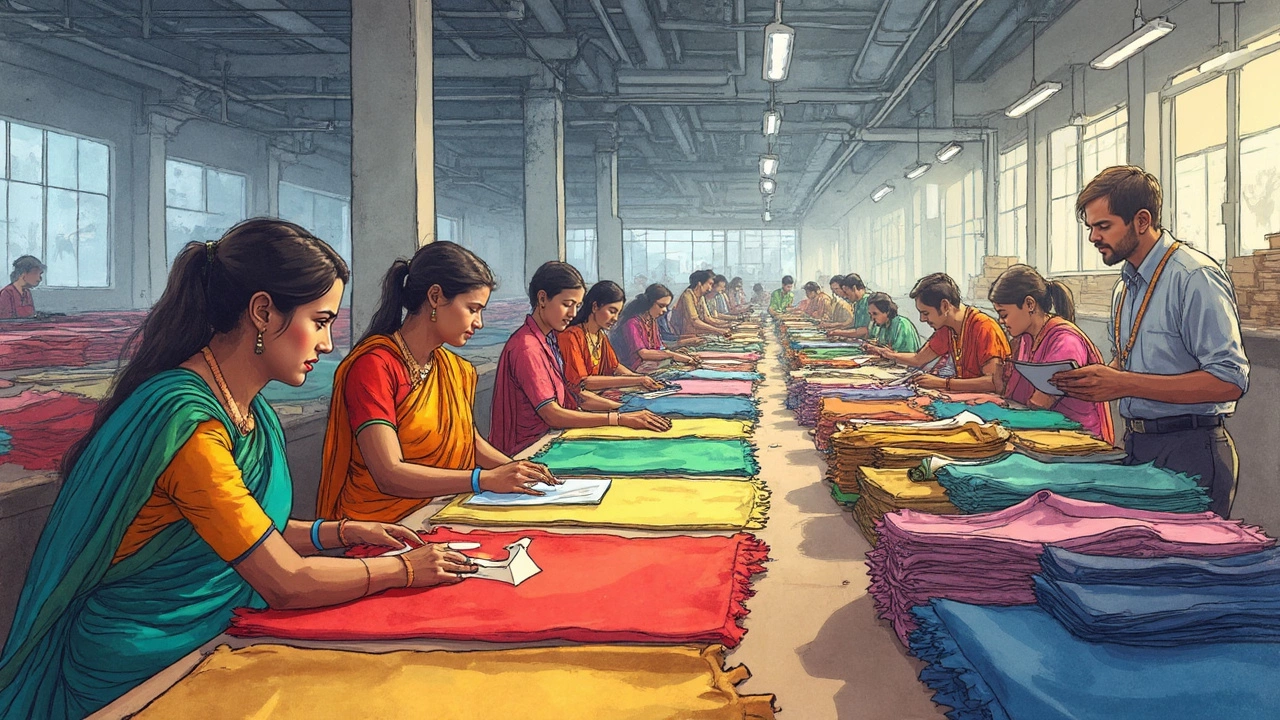Garment Export: Trends, Challenges & Opportunities
When working with garment export, the process of shipping finished clothing from a producer to overseas buyers. Also known as apparel export, it drives revenue for many Indian manufacturers and connects local factories to global fashion chains. Understanding how this flow works helps you spot profit spikes, avoid bottlenecks, and plan for the next season’s demand.
Why Garment Export Matters for Indian Manufacturing
The textile industry, India’s network of mills, yarn producers, and fabric finishers. It supplies the raw material that powers garment export. Companies like Arvind Limited and Reliance Industries dominate this space, accounting for a large share of yarn output and fabric innovation. When the textile sector ramps up sustainable fibers or faster dyeing techniques, exporters can offer fresh styles that meet overseas buyer criteria, creating a feedback loop that fuels growth.
Next, the export markets, countries and regions that import Indian garments. The United States, European Union, and Middle East remain top destinations, each with its own compliance rules, tariff structures, and fashion calendars. Navigating these nuances influences pricing strategy, product development cycles, and even the choice of fabrics. For example, EU’s stricter chemical regulations push exporters toward organic cotton, while US demand for athleisure fuels quick‑turn production.
Effective supply chain management, coordinating raw material sourcing, production scheduling, and logistics is the backbone of successful garment export. A single delay in yarn delivery can push a shipment past a retailer’s buying window, costing both time and money. Leveraging digital tracking, consolidating freight, and partnering with reliable customs brokers reduce friction. Companies that invest in end‑to‑end visibility often see margin improvements of 3‑5% because they avoid stockouts and lower warehousing fees.
For many entrepreneurs, small scale manufacturing, low‑investment factories that produce limited garment runs offers a gateway into export. These micro‑factories can specialize in niche products like eco‑friendly accessories or custom embroidered workwear, catering to boutique brands abroad. With the right technology – CNC cutting, automated stitching, and cloud‑based order management – a 50‑person unit can fulfill orders for multiple overseas clients without the overhead of a mega‑plant.
Demand trends also shape export strategies. High‑demand products such as sustainable denim, performance activewear, and gender‑neutral basics dominate 2025’s fashion forecasts. Buyers are looking for quicker turnarounds, transparent sourcing, and recyclable packaging. Exporters that align their product mix with these trends capture premium pricing and secure repeat contracts. Monitoring trade data and fashion weeks helps predict which styles will surge, allowing manufacturers to pre‑position inventory and reduce lead times.
Government policies play a quiet but decisive role. Initiatives like the “Make in India” framework, export‑linked credit schemes, and reduced GST rates for textile exporters lower entry barriers. States such as Tamil Nadu and Gujarat offer dedicated export zones with streamlined customs processes. Staying updated on policy shifts ensures you can claim incentives before deadlines and avoid unexpected duty hikes.
All these pieces – a robust textile base, savvy market targeting, tight supply chain control, and supportive policy – combine to form a resilient garment export ecosystem. Below you’ll find a curated set of articles that dive deeper into each of these areas, offering practical tips, data‑driven insights, and real‑world examples you can apply right away.
